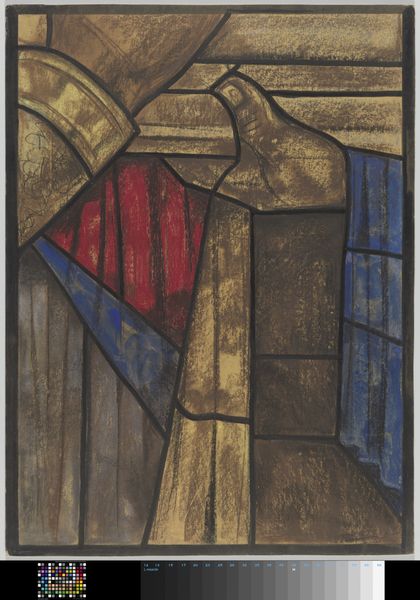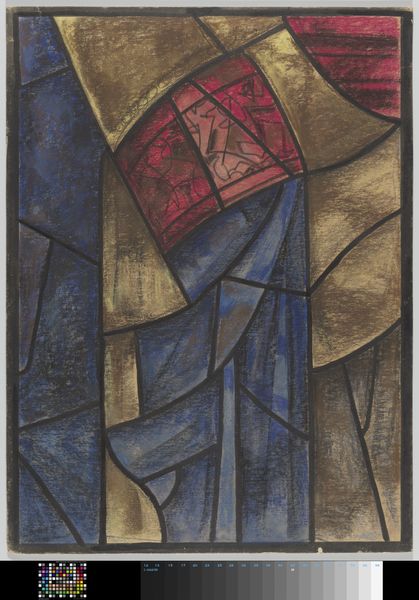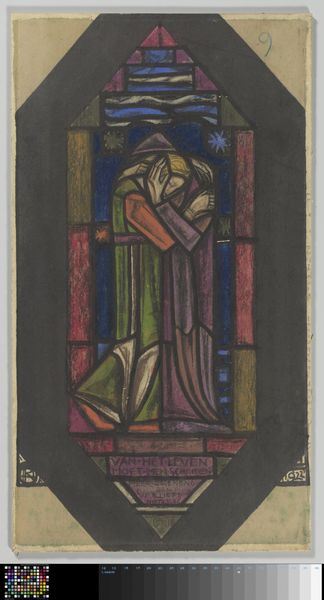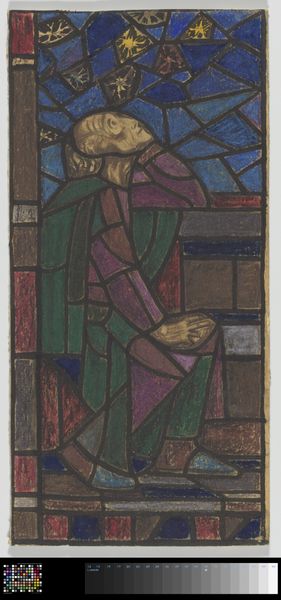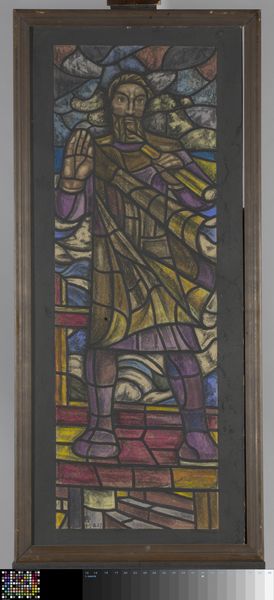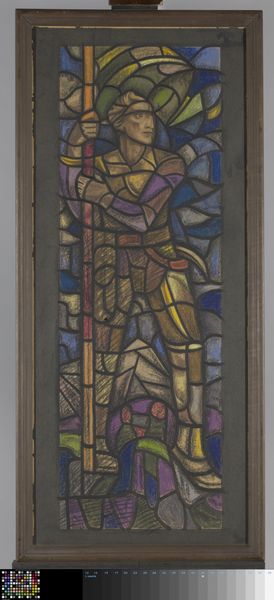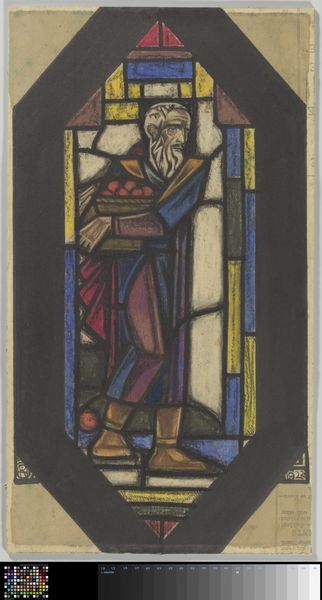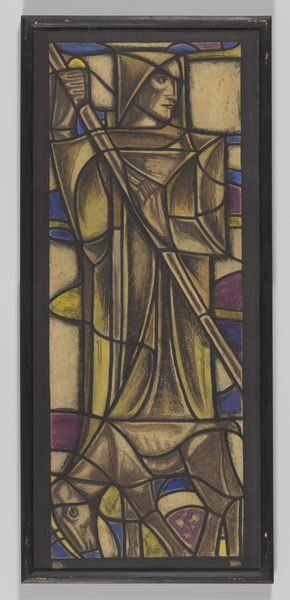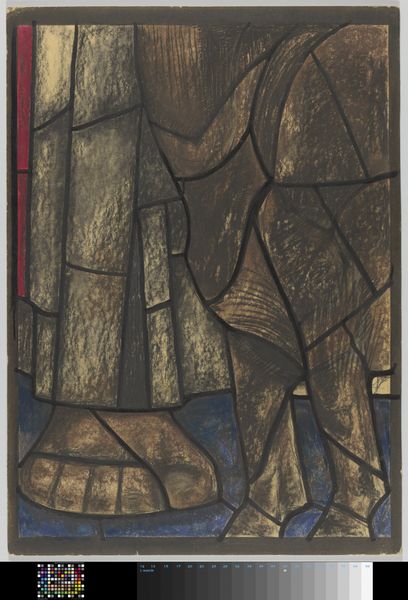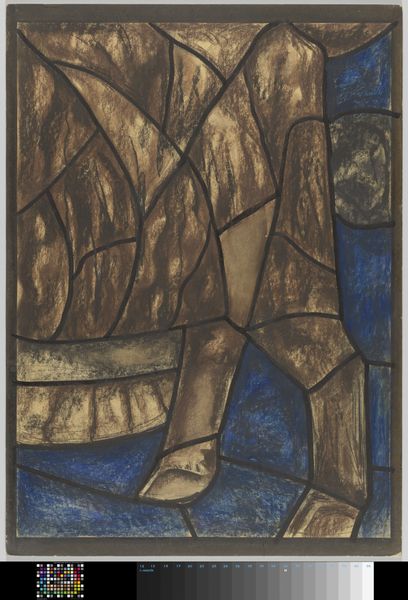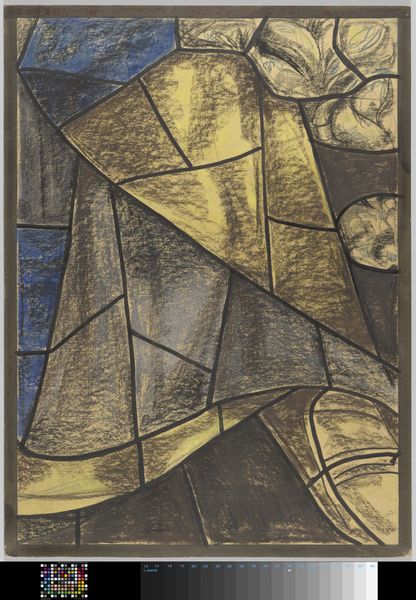
Ontwerp voor raam in het Nederlands Paviljoen op de tentoonstelling Arts Décoratifs te Parijs, 1925 1925
0:00
0:00
richardnicolausrolandholst
Rijksmuseum
Dimensions: height 990 mm, width 360 mm
Copyright: Rijks Museum: Open Domain
Curator: Welcome. We’re standing before a design by Richard Nicolaüs Roland Holst, titled “Ontwerp voor raam in het Nederlands Paviljoen op de tentoonstelling Arts Décoratifs te Parijs, 1925”—or, a design for a window in the Dutch Pavilion at the Arts Decoratifs Exhibition in Paris, from 1925. Editor: It evokes a quiet solemnity, doesn't it? The figure, with their clasped hands and downcast gaze, suggests a moment of deep contemplation, almost a kind of resigned melancholy. Curator: Absolutely. Holst, steeped in socialist ideals and symbolism, aimed for a synthesis of art and social purpose. Designs like this showcased Dutch craftsmanship and progressive values on an international stage, reflecting the anxieties of the time, especially regarding class division. Editor: And I think that comes through in the somewhat muted palette—the browns, purples, blues –there’s a lack of vibrancy. That could reflect, you know, the soberness, the weighty mood of the post-war period. I see a conscious departure from the more flamboyant aspects of pure Art Nouveau. Curator: Precisely. The Arts Décoratifs show in Paris was meant to celebrate modernity but Holst introduces figuration. His symbolism integrates political messages: class division as a symbol for a social problem. These windows weren't merely decorative. Editor: Let’s also talk about that medium: tempera and chalk on glass. I am interested in how this design might be considered beyond just an aesthetic. Was glass, perhaps, considered more accessible to, or more likely to be viewed by a broader audience than, say, an oil painting in an elite gallery? Curator: Possibly. The glass design would exist as part of the built environment and experienced by people regardless of socioeconomic class. It's a challenge to pure aestheticism and for Art's own sake, one that attempts to bridge that chasm. Holst uses an art form for its societal visibility. Editor: I'm leaving with this feeling that the artwork challenges art’s traditional place as being purely aesthetically enjoyable. Its subdued tone paired with it as being the literal foundations, architectural or design choices shows us more about the potential for accessible, community-oriented artistic visions during that time. Curator: I’m struck by how it showcases art as deeply enmeshed in politics and social realities, demonstrating how artistic vision can intersect with a sense of social obligation during transformative periods in time.
Comments
No comments
Be the first to comment and join the conversation on the ultimate creative platform.

